 Abraham Lincoln
If given the truth, the people can be depended upon to meet any national crisis...
Abraham Lincoln
If given the truth, the people can be depended upon to meet any national crisis...
 Guildford news...
for Guildford people, brought to you by Guildford reporters - Guildford's own news service
Guildford news...
for Guildford people, brought to you by Guildford reporters - Guildford's own news service
The State of Surrey’s Nature – From A Report Launched by David Attenborough
Published on: 25 May, 2013
Updated on: 28 May, 2013
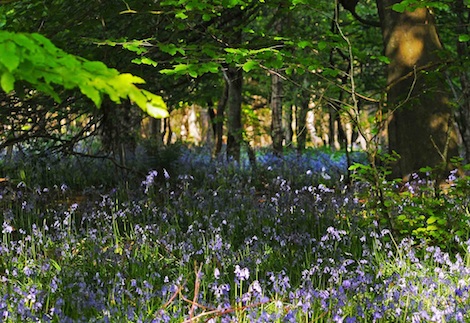
Under threat – bluebell woods
Report and photos by Dani Maimone
According to the UK’s first national report on the state of our natural environment, 60% of our species are in decline with some on the brink of extinction.
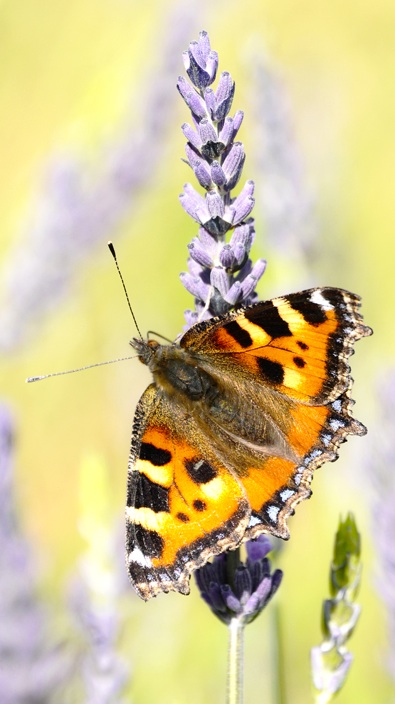
Declining numbers – small tortoishell butterfly
Scientists from 25 wildlife organisations including the RSPB, Amphibian and Reptile Conservation and the Wildlife Trusts compiled the State of Nature report, launched by Sir David Attenborough and UK conservation charities at the natural History Museum in London.
One in ten of all the species assessed including, turtledoves, red squirrels and the small tortoiseshell butterfly are under threat of disappearing from our shores all together.
Surrey is the most wooded county in the UK and more significantly is home to some areas of national and international importance for wildlife. In Surrey, Hampshire and Berkshire for example there are areas of heathland, now collectively known as the Thames Basin and Wealden Heaths.
They are home to a range of specialist heathland wildlife including smooth snakes, sand lizards, Dartford warblers and many butterflies and dragonflies. Over the years much of this habitat has disappeared and what remains is often fragmented into isolated pockets, which have become the last place in Surrey where you can find many species that are in decline.
Sarah Jane Chimbwandira, Director of Biodiversity at Surrey Wildlife Trust said: “In Surrey the challenges being faced by our wildlife remain significant and the report is a timely reminder that despite some recent successes there is a considerable amount still to do.
“For example, there are over 270 priority species across the county that are in national decline. The iconic heathlands in the west of the county, themselves a surviving fragment of what was once an extensive habitat, are often the sole repository for many key species in decline such as the red barbed ant and heath tiger beetle.”

Wildflowers, like this cornflower, are less prolific following increased use of herbicides and changes in land use
The report outlines a number of possible reasons for the decline in species, including development, changes in land management and farming practices but states there is no doubt that climate change has also played a part.
There have been significant losses in species across the board although probably greatest amongst insects including moths, butterflies and beetles. The Dartford warbler, has seen a 95% decline in recent years and our iconic mammal the hedgehog is struggling, even our spring carpet of bluebell woodlands is under threat.
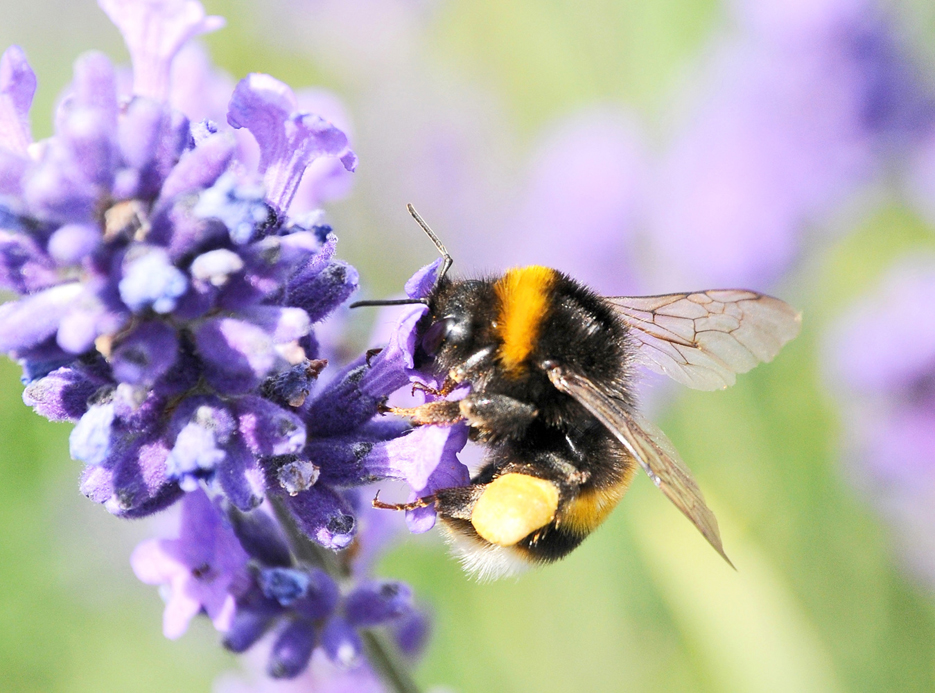
Bumble bees are another species where numbers have been reported to be in decline
There are successes as well as losses. The re-introduction of the red kite, the osprey and the otter has been hugely successful with the latter sighted more recently in Surrey. Just a few weeks ago Surrey Wildlife Trust reported seeing a mother and two pups and last year found evidence of otters passing through Guildford.
It was recognized that an army of volunteers contributed to the State of Nature report with their tireless dedication to surveying and recording species.
As he launched the report Sir David Attenborough said: “This groundbreaking report is a stark warning – but it is also a sign of hope.
“For 60 years I have travelled the world exploring the wonders of nature and sharing that wonder with the public. But as a boy my first inspiration came from discovering the UK’s own wildlife.
“Our islands have a rich diversity of habitats which support some truly amazing plants and animals. We should all be proud of the beauty we find on our own doorstep; from bluebells carpeting woodland floors and delicately patterned fritillary butterflies, to the graceful basking shark and the majestic golden eagle soaring over the Scottish mountains.
“This report shows that our species are in trouble, with many declining at a worrying rate. However, we have in this country a network of passionate conservation groups supported by millions of people who love wildlife. The experts have come together today to highlight the amazing nature we have around us and to ensure that it remains here for generations to come.”
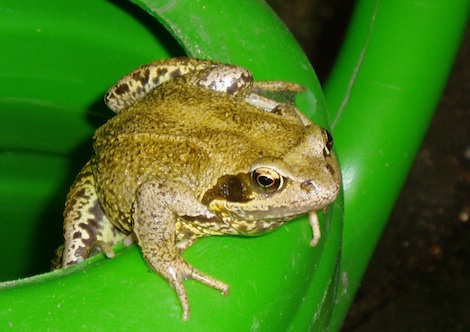
Garden frogs – not so common any more – Photo Martin Giles
So what can be done? For a start, if you own a garden you can make a huge difference to wildlife. The UK’s gardens cover well over 270,000 hectares of land, that’s a lot of potential wildlife habitat. Create a pond, put in a birdbath, feed the birds and leave some leaf litter around for insects and hedgehogs.
Water will attract everything from birds, frogs, dragonflies and newts. Choose plants that are insect friendly for pollinators. Become a volunteer with a local wildlife organisation.
We all have a responsibility towards our natural environment and a duty to help preserve it for the next generation, 25 conservation organisations across the country are on the case and working together to make it happen. That’s progress!
See also:
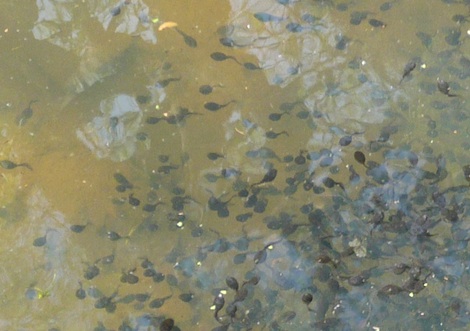
Countless Surrey tadpoles at Birtley House, Bramley on May 25. One sign of hope for our wildlife but the attrition rate is fearsome. Photo Martin Giles

"Found any?" - "Nope, it all looks green to me!" (See Opinion: The Future is Congested, the Future is Grey)
www.abbotshospital.org/news/">





Recent Articles
- Latest Evidence in Sara Sharif Trial
- Ash’s New Road Bridge Is Named – and November 23rd Is Opening Day
- Class A in Underwear Leads to Jail Sentence
- Historical Almshouse Charity Celebrates Guildford in Bloom Victory
- Notice: Shalford Renewable Showcase – November 16
- Firework Fiesta: Guildford Lions Club Announces Extra Attractions
- Come and Meet the Flower Fairies at Watts Gallery
- Updated: Royal Mail Public Counter in Woodbridge Meadows to Close, Says Staff Member
- Letter: New Developments Should Benefit Local People
- Open Letter to Jeremy Hunt, MP: Ash’s Healthcare Concerns


Search in Site
Media Gallery
Dragon Interview: Local Artist Leaves Her Mark At One of England’s Most Historic Buildings
January 21, 2023 / No Comment / Read MoreDragon Interview: Lib Dem Planning Chair: ‘Current Policy Doesn’t Work for Local People’
January 19, 2023 / No Comment / Read MoreA3 Tunnel in Guildford ‘Necessary’ for New Homes, Says Guildford’s MP
January 10, 2023 / No Comment / Read More‘Madness’ for London Road Scheme to Go Ahead Against ‘Huge Opposition’, Says SCC Leader
January 6, 2023 / No Comment / Read MoreCouncillor’s Son Starts Campaign for More Consultation on North Street Plan
December 30, 2022 / No Comment / Read MoreCounty Council Climbs Down Over London Road Works – Further ‘Engagement’ Period Announced
December 14, 2022 / No Comment / Read MoreDragon Interview: GBC Reaction to the Government’s Expected Decision to Relax Housing Targets
December 7, 2022 / No Comment / Read MoreHow Can Our Town Centre Businesses Recover? Watch the Shop Front Debate
May 18, 2020 / No Comment / Read More







Recent Comments